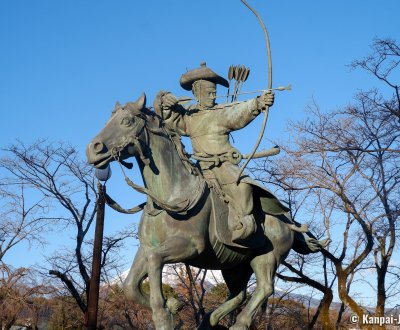Kamakura Period
The First Japanese Bakufu
The Kamakura Period stretches over 1 century and a half, from 1185 to 1333 between 2 wars for succession to the imperial throne. It is the start of Japan’s medieval times ruled by the warrior class. Its name derives from the eponymous city where the shoguns settled, far from Kyoto and the Imperial Court’s intrigues, and for the first time outside of the Kansai area.
Also called the "first Bakufu" (the "tent government", that is to say the warriors’ regime), the period begins after the victory of Minamoto no Yoritomo (1147 – 1199) in the battle of Dan-no-ura (Straits of Shimonoseki between Kyushu and Honshu) that ends the Gempei War and the long antagonism between the Minamoto and Taira clans.
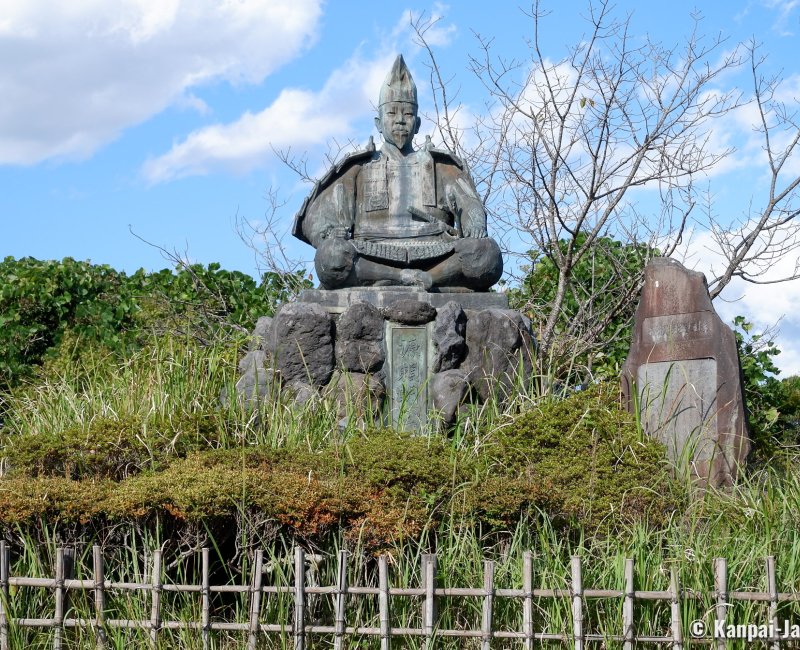
Yoritomo, who organized and rallied the Kanto area’s clans under the retired emperor Go-Shirakawa’s banner, benefits from a comfortable position in the eastern territories of Honshu. He settles in Kamakura, a small town at a sufficient distance from the Court, but strategically located between the Kansai and the Kanto areas. His reign officially starts in 1192 when the emperor grants him the hereditary title of Sei i tai shogun (or shogun) in acknowledgment of his authority over the eastern territories.
However, Kamakura regime’s power quickly shifted from the Minamoto to the Hojo clan, thanks to Yoritomo’s widow Hojo Masako (1156 – 1225), who established a regency over shoguns from 1199.
Economy and society
Besides the 2 exceptions of Kyoto, the imperial capital (estimated population: 100,000 inhabitants) and Kamakura, the shogun’s capital (estimated population: 60,000 inhabitants), Japan’s population at the times is mostly rural, and people live on domains belonging to large religious bodies or aristocrats. Historians estimate that Japan’s population amounted to about 7 to 9 million inhabitants, spread on a territory encompassing Kyushu, Shikoku, and Honshu, with a higher density in the Kansai area and around Kamakura at the end of the Kamakura period.
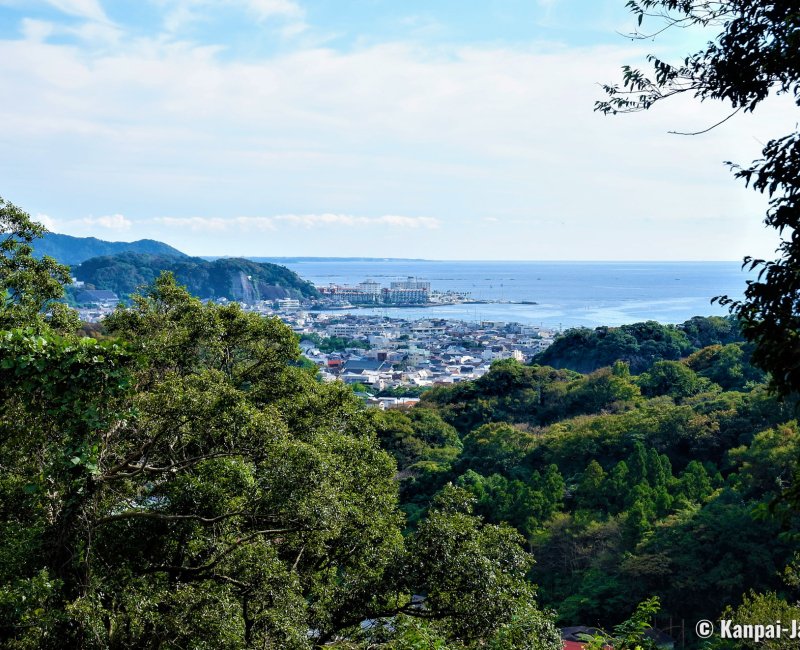
The 12th to early 14th century span is a time of economic development thanks to a rise in agricultural production and the introduction of Chinese copper money, that allows for a larger monetization of trade. Trade exchanges are also growing between domains, thanks to the creation of regular markets, most of the time near temples or important roads, as is commerce with Asia through the strategic port of Hakata (Fukuoka, Kyushu). Port cities on the Seto Inland Sea also start to thrive, as well as Otsu, on the shore of Lake Biwa.
In the provinces, a warrior elite is flourishing around the shugo, a kind of governor who are theoretically answering to the central power, and usually rooted into local powerful families that are rich enough to buy equipment and maintain troops. In the meantime, farmers and peasants also begin to organize to be able to oppose to the domains’ rulers.
Religious renewal
The Buddhist clergy has become increasingly wealthy, especially through the exploitation of its domains and thanks to the financial support of the aristocracy and high ranking warriors, who fund their action of spiritual protection of the country. Enryaku-ji monastery is exerting a great influence and many clerics studied there.
In contrast to this wealthiness, and with Japanese Buddhism marked by a "end times" thinking since the late Heian period, several religious movements try to graduate from doctrines they consider too narrow:
- In the continuity of Pure Land Buddhism, whose teaching was simplified to the chanting of the Nenbutsu and opened to everyone, Shinran (1173-1262) founded the "True Pure Land School" (Jodo-shinshu) that institutes the preeminence of faith in Buddha over rituals and the worshiper’s actions.
- The Lotus School, founded by Nichiren (1222-1282) in 1253, focuses its teaching on the Lotus Sutra and the historical Buddha. For him, enlightenment can be attained in only one life (and not several as usually taught) and even by women.
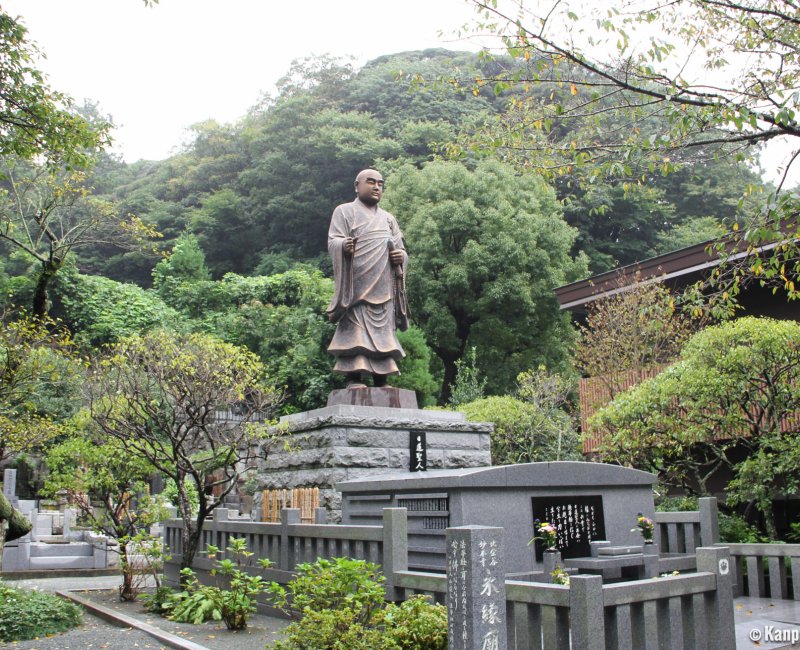
Zen Buddhism is a monastic current and was imported from China to Japan in several waves between the 6th and the 13th centuries. Two branches will take root in Japan:
- The Rinzai School, characterized by the koan riddles; and,
- The Soto School, where zazen is practiced.
A proponent of the first school, Eisai (1141-1215), who opposed to the traditional Japanese Buddhist schools, left Kyoto for Kamakura in 1199, where he was well received as his teachings have strong ties with martial arts. Among the many Rinzai temples, it is still possible to visit the Kennin-ji in Kyoto and the Kencho-ji in Kamakura nowadays.
The second school is represented by Dogen (1200-1253) who was exiled in Echizen Province (today’s Niigata) where he founded Eihei-ji temple in 1244. Zen Buddhism is an important philosophical stepping stone for the upcoming development of tea ceremony and the art of gardening.
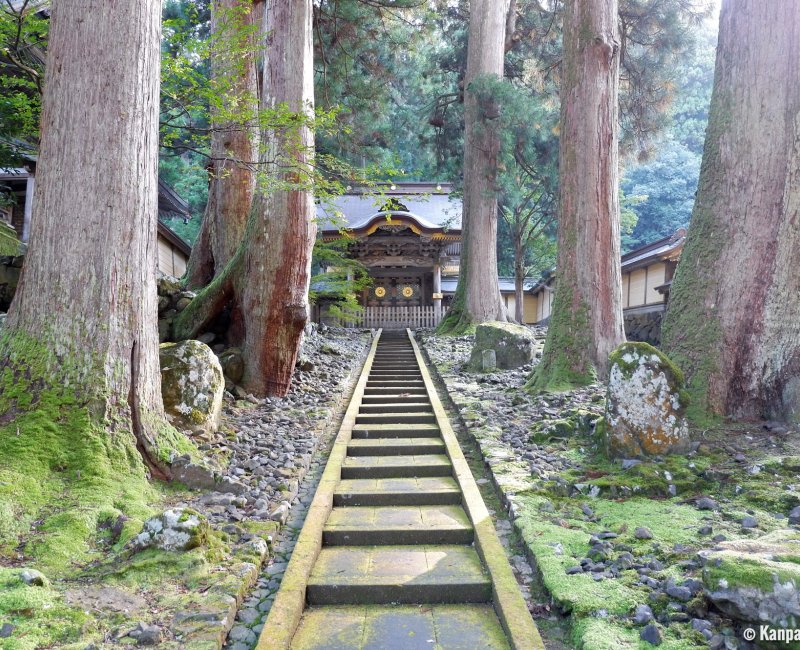
As for the Shinto cult, Hachiman, the war deity already worshiped in Iwashimizu Hachiman-gu since the 9th century, takes an increasing importance during the Kamakura period. Minamoto no Yoritomo indeed made Hachiman the tutelary god of his clan and built him a shrine in the new capital of Japan: the Tsurugaoka Hachiman-gu, one of the Kanto area’s most important places of Shinto worship.
Arts imbued with realism
The warriors’ culture influences painting and sculpture by spurring an attention to a greater realism and more expressiveness, that can be seen in:
- Portrait, a genre that appeared during the Heian period, it gains momentum with the "resembling portraits" trend. These paintings mainly picture clerics or statesmen such as Minamoto no Yoritomo whose portrait is preserved at Tokyo National Museum.
- The Yamato-e painting style, and the development of a painting depicting landscapes with such realism that they can be recognized. It is also the beginning of figurative painting of the kami deities.
- Emakimono horizontal painted scrolls are still popular and show a tentative representation of volume and width, and start to built the legend of the Taira and the Minamoto, in parallel to the traveling storytellers.
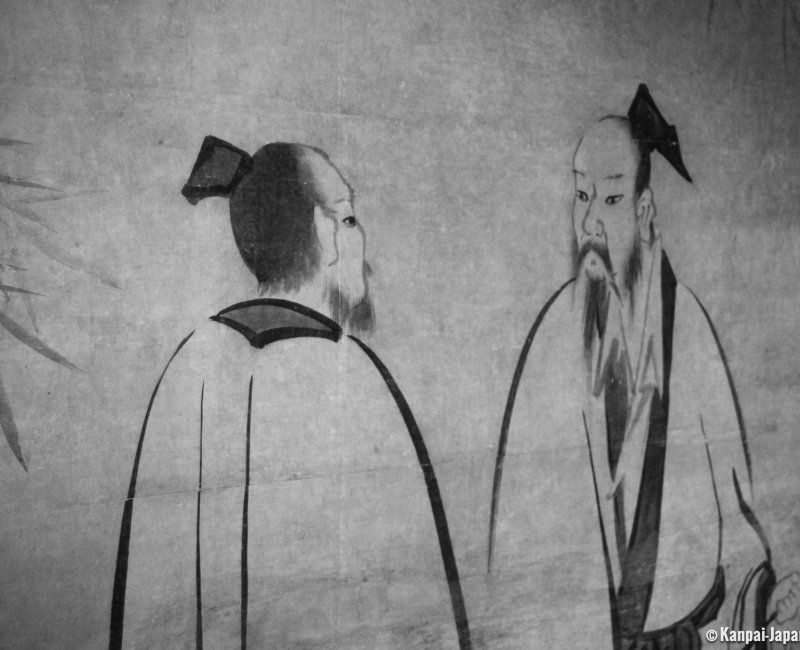
Zen monks introduce the first monochromatic suibokuga (Indian ink paintings). The religious painting developed the genre of raigo, an illustration of Buddha and his bodhisattvas’ spectacular apparition to welcome deceased worshipers and lead them to the Pure Land.
The Todai-ji temple in Nara, destroyed during the Gempei War, becomes a place of artistic renewal as it is rebuilt at the end of the 12th century. This renewal benefits religious sculpture, the best example being the Nioo guardians statues completed in 1203, showing a dynamic stance and a tendency to anatomical realism. To this day, it is still possible to admire several buildings constructed during the Kamakura period:
- The Shô-rô bell tower,
- Hokke-do pavilion (also called Sangatsu-do), and,
- Nandai-mon, the great south gate also sheltering the Nioo statues.
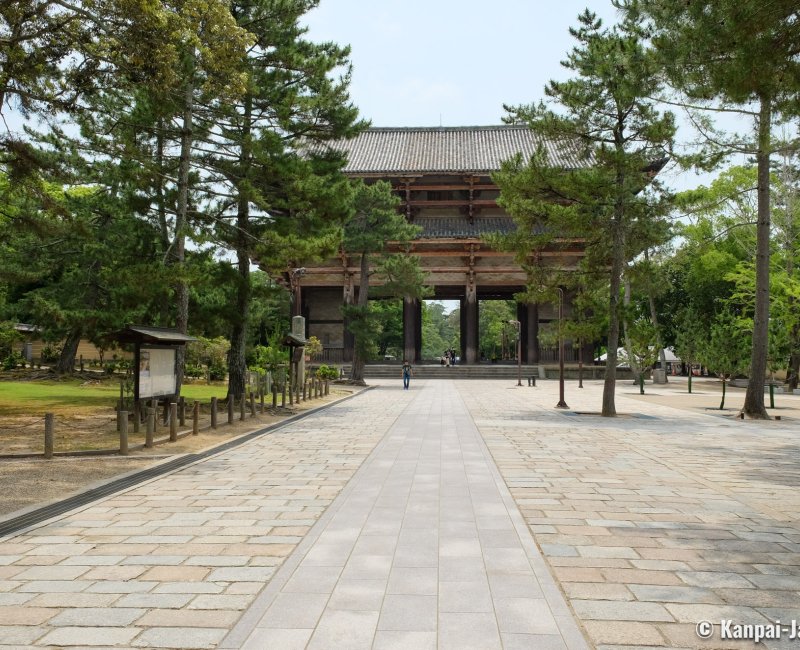
A lasting government
The Kamakura shogunate is a period of relative peace, even if the relationships between the shoguns and the Court have alternated between conflict and cooperation. There were nonetheless riots due to 2 famines during the 13th century, and the attempt at seizing power by emperor Go-Toba in 1219.
Mongol invasions threatened the country twice, in 1274 and 1281, and were averted thanks to providential typhoons 🌀, the "divine winds" (kamikaze), but also thanks to defense preparations on the invaders’ landing place in Kyushu’s Hakata Bay.
These victories have helped reinforce Kamakura government’s authority and prestige, but they also helped hasten its demise. Indeed, the peculiar nature of the Mongol attacks did not allow for any loot, that is usually distributed as a compensation to the warlords, a fact that added to the dissatisfaction against the Hojo rulers.
Additionally, other causes of resentment against the Bakufu were:
- The insecurity in the West provoked by rebels against the central power;
- The lords’ weakening after the enforcement of unfavorable inheritance laws;
- The rise of tensions after the re-parceling of lords and religious establishments’ domains.
The end of the period is marked by the rebellion of emperor Go-Daigo, who was shortly exiled in Oki Island (current Shimane prefecture) in 1331. The Ashikaga, a secondary branch of the Minamoto, allied with him and ended the Hojo reign in 1333, thus opening the Muromachi period.

